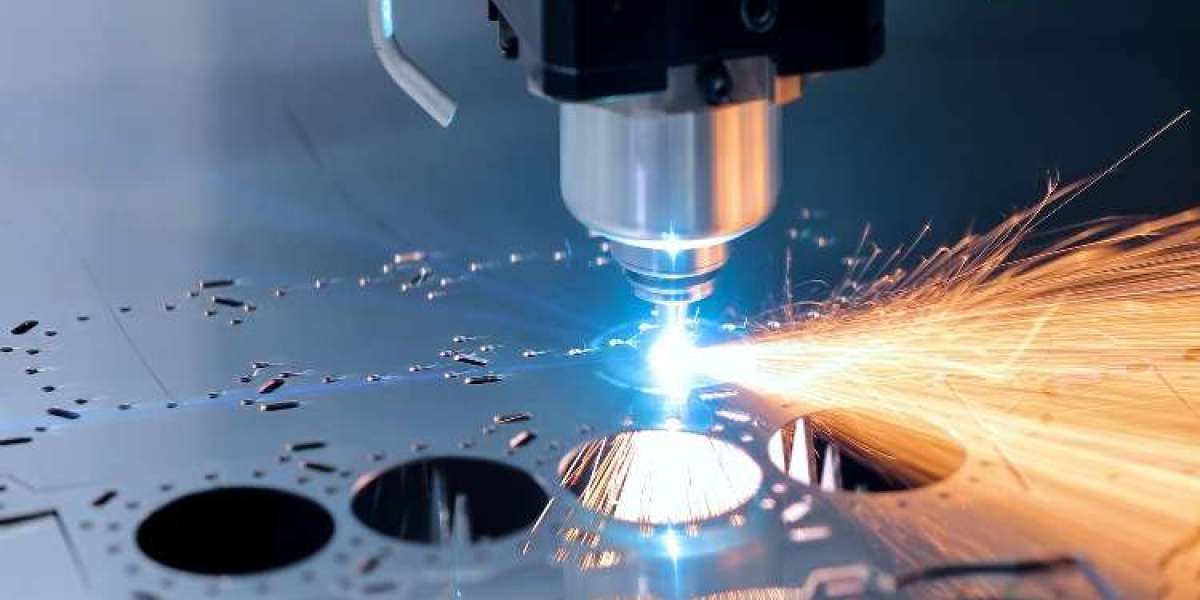In today’s manufacturing industry, precision and efficiency are paramount. One of the key technologies driving this evolution is CNC (Computer Numerical Control) machining. CNC machining refers to the use of computer-controlled machines to automate and streamline manufacturing processes, ensuring high precision, repeatability, and complexity in the production of parts and components. In this article, we’ll explore what CNC machining is, how it works, its benefits, and the various applications it serves across industries.
What is CNC Machining?
CNC machining is a manufacturing process where a computer program is used to control the movement of tools and machinery. These machines perform a variety of tasks such as drilling, milling, turning, and grinding, all guided by a computer, ensuring that the final product meets the required specifications.
Unlike traditional manual machining, where an operator manually controls the machine, CNC machining eliminates the need for direct operator intervention in the machining process. Instead, the machine follows pre-programmed instructions (G-codes) to carry out the necessary operations.
How Does CNC Machining Work?
CNC machining operates through a series of steps that are initiated and controlled by the operator via a computer program. Here’s a simplified breakdown of how CNC machining works:
Design Creation: The process begins with the creation of a 3D design or model of the part to be produced. This design is usually done using CAD (Computer-Aided Design) software. The model includes precise dimensions, tolerances, and material specifications.
Program Generation: The 3D design is then converted into a set of instructions (G-codes) using CAM (Computer-Aided Manufacturing) software. This program tells the CNC machine how to move, which tools to use, and the feed rates to apply.
Machine Setup: Once the program is generated, the machine is set up with the required tools, and the workpiece is securely positioned on the CNC machine bed. The operator may also need to load specific material such as metal, plastic, or composite.
Machining: The CNC machine follows the program to precisely cut, drill, mill, or shape the material to create the final part. The machine executes each movement with high accuracy, making minute adjustments as necessary to maintain tight tolerances.
Finishing: After the main machining is complete, additional operations like polishing, deburring, or coating may be performed to achieve the final finish and quality.
Types of CNC Machines
CNC machines come in various types, each designed for specific applications. Here are some of the most common types of CNC machines:
CNC Milling Machines: CNC mills are used for drilling, cutting, and shaping materials. These machines are capable of both horizontal and vertical movements and can work on a variety of materials such as metals, plastics, and composites.
CNC Lathes: CNC lathes are used for turning operations, where the material is rotated while a stationary tool removes material to create cylindrical or conical shapes. These machines are ideal for producing parts like shafts, bushings, and bolts.
CNC Routers: CNC routers are similar to milling machines but are typically used for cutting softer materials like wood, plastics, and foam. They are often used in woodworking, sign-making, and even furniture production.
CNC Plasma Cutters: CNC plasma cutters use a high-temperature plasma arc to cut through conductive materials like steel, aluminum, and brass. These machines are commonly used for sheet metal cutting and welding.
CNC Wire EDM (Electrical Discharge Machining): CNC wire EDM uses a thin, electrically charged wire to cut through metal parts with extreme precision. This process is ideal for creating intricate or delicate shapes in hard metals.
Benefits of CNC Machining
CNC machining offers numerous advantages, making it a preferred choice in many manufacturing processes. Here are some key benefits:
1. Precision and Accuracy
CNC machines can achieve incredibly high levels of precision, with tolerances as tight as 0.0001 inches. The computer control ensures that every cut or operation is performed consistently, resulting in parts that meet exact specifications every time. This level of precision is nearly impossible to achieve with manual machining.
2. Efficiency and Speed
CNC machines operate continuously without the need for breaks, resulting in faster production times. Once a program is set up, the machine can run automatically, performing the same tasks repeatedly without human intervention. This reduces the likelihood of errors and speeds up the overall manufacturing process.
3. Flexibility and Versatility
CNC machines are highly versatile and can handle a wide range of materials such as metals, plastics, and composites. They can also produce a variety of part shapes, from simple to complex geometries, and can switch between different operations, such as turning, milling, and drilling, within a single cycle.
4. Reduced Human Error
Because CNC machines follow programmed instructions, the risk of human error is significantly reduced. This ensures higher quality parts and fewer defects in the production process, saving both time and resources.
5. Cost-Effective for High-Volume Production
Once a CNC machine is programmed and set up, it can produce a large number of identical parts with minimal intervention. This makes CNC machining highly cost-effective for mass production, as the setup time and labor costs are minimal compared to traditional methods.
Applications of CNC Machining
CNC machining is used across a wide range of industries, including aerospace, automotive, medical, and electronics. Here are some common applications of CNC machining:
Aerospace: CNC machining is heavily utilized in the aerospace industry to manufacture precise parts such as engine components, turbine blades, and structural components. The ability to achieve tight tolerances and high-quality finishes is crucial in ensuring the safety and performance of aerospace products.
Automotive: The automotive industry uses CNC machining to produce a wide range of parts, including engine components, gears, transmission parts, and body panels. CNC machines provide the necessary precision and speed for mass production of these high-demand parts.
Medical: In the medical field, CNC machining is used to create precision medical devices such as surgical instruments, implants, and prosthetics. The ability to produce complex shapes with high accuracy is critical for ensuring the proper function and safety of medical devices.
Electronics: CNC machining is also used to manufacture small and intricate parts for electronics, such as circuit boards, connectors, and housings. The precision offered by CNC machines ensures that the components fit together perfectly in highly specialized devices.
Defense and Military: The defense industry relies on CNC machining for producing high-performance parts for military equipment, including weapons, vehicles, and armor. The strength, precision, and reliability of CNC-machined components are essential in ensuring the functionality of military products.
Challenges in CNC Machining
While CNC machining offers numerous advantages, it is not without its challenges:
High Initial Setup Costs: The cost of purchasing and setting up CNC machines can be significant. Small businesses or startups may find the initial investment prohibitive.
Skilled Labor Required: While CNC machines are automated, operators still need a certain level of expertise to program and maintain the machines effectively. Skilled technicians are required to ensure the machine operates efficiently and produces high-quality parts.
Limited by Material Properties: CNC machining is suitable for a wide variety of materials, but some hard materials may be difficult to machine due to the wear on tools or the need for specialized machines.
Conclusion
CNC machining has revolutionized the manufacturing industry, offering enhanced precision, speed, and flexibility. Whether you're in aerospace, automotive, medical, or any other industry, CNC machines play a crucial role in producing high-quality, reliable parts. Despite its challenges, the benefits of CNC machining far outweigh the drawbacks, making it an essential part of modern manufacturing processes. By understanding how CNC machining works and its numerous applications, businesses can harness its power to improve their production capabilities and stay ahead in an increasingly competitive market.







